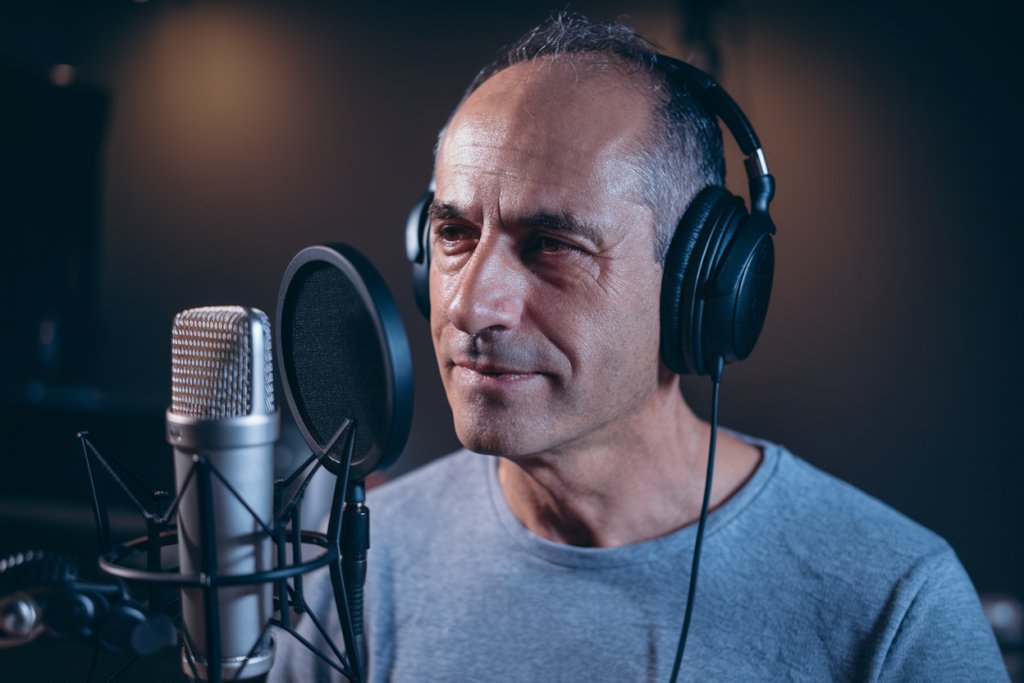Exploring the intricacies of Italian vocal adaptation reveals a fascinating interplay of cultural and musical influences. As I delve into this topic, I’m struck by how various factors shape the way singers interpret and express their art. From regional dialects to historical contexts, each element plays a crucial role in defining vocal techniques and styles.
Understanding these condicionantes not only enhances our appreciation for Italian music but also sheds light on the broader implications for vocal performance globally. Whether you’re a musician, a scholar, or simply an enthusiast, uncovering these layers enriches your connection to the art form. Join me as we navigate through the essential components that inform Italian vocal adaptation and discover what makes it so unique.
Overview of Condicionantes en La Adaptacion Vocal Italiana
Italian vocal adaptation involves several key condicionantes that significantly influence the performance and interpretation of music. These factors include regional dialects, cultural heritage, historical contexts, and specific vocal techniques.
- Regional Dialects: Italy’s diverse regions contribute distinct phonetic characteristics to singing styles. For example, a singer from Naples may emphasize different vowels compared to one from Milan. These variations enrich the overall texture of Italian vocal art.
- Cultural Heritage: Historical events and traditions shape how singers approach their craft. The integration of folk music elements into classical training highlights the importance of cultural roots in vocal expression.
- Historical Contexts: Different periods in Italian history brought about unique musical styles and preferences. The evolution from Baroque to Romantic eras showcases shifts in vocal techniques, emphasizing emotional delivery alongside technical skill.
- Specific Vocal Techniques: Mastery of breath control, resonance placement, and articulation is crucial for effective vocal adaptation in Italian music. Singers often employ techniques tailored to specific genres or compositions, ensuring authentic interpretations.
- Influence of Composers: Renowned composers such as Verdi and Puccini have left lasting impacts on vocal practices through their works’ demands on singers’ abilities. Understanding these requirements aids performers in delivering accurate renditions.
These condicionantes collectively enhance appreciation for Italian music while informing performers about the nuances essential for effective interpretation.
Historical Context
Italian vocal adaptation is deeply rooted in a rich historical background that has shaped its evolution over centuries. Understanding this context reveals the intricate layers of cultural influences and musical developments impacting vocal techniques.
Evolution of Vocal Techniques
Vocal techniques in Italy evolved significantly from the Renaissance through to the Romantic era. In the Renaissance, emphasis on clear diction and expressive phrasing became prevalent, laying the groundwork for later developments. The Baroque period introduced ornamentation and virtuosic singing as composers like Monteverdi pushed boundaries in expression. As music transitioned into the Classical period, precision in breath control and tone production gained importance.
By the Romantic era, emotional delivery took precedence alongside technical mastery, compelling singers to adapt their voices to convey deeper sentiments. This shift required performers to refine their skills continuously while integrating diverse styles influenced by regional characteristics.
Influence of Italian Opera
Italian opera played a pivotal role in shaping vocal adaptation practices. Originating in the late 16th century, opera established new standards for performance through its dramatic storytelling and complex character portrayals. Composers such as Verdi and Puccini set demanding expectations for singers regarding vocal agility, emotional depth, and dramatic presence.
The operatic repertoire requires specific techniques tailored to each role’s demands—whether bel canto style emphasizing lyrical beauty or more dramatic interpretations requiring powerful projection. As a result, aspiring singers often immerse themselves in both classical training methods and operatic performance traditions to develop versatile capabilities essential for effective interpretation within this genre.
Key Factors in Vocal Adaptation
Vocal adaptation in Italian music hinges on various key factors that shape performance and interpretation. These elements reflect the rich tapestry of Italy’s cultural, regional, and linguistic landscapes.
Cultural Influences
Cultural influences play a vital role in vocal adaptation. Each region of Italy possesses unique traditions, folklore, and musical styles that inform how singers approach their art. For instance, Neapolitan songs often emphasize emotional delivery and improvisation, while Venetian melodies may showcase intricate ornamentations. Singers incorporate these cultural nuances into their performances to enhance authenticity and connect with audiences on a deeper level. Additionally, the integration of folk music traditions into classical training enriches vocal expression by providing diverse stylistic frameworks for performers to explore.
Linguistic Considerations
Linguistic considerations significantly impact vocal technique and delivery. The Italian language features distinct phonetic characteristics that influence pronunciation, diction, and resonance placement during singing. Regional dialects introduce variations in vowel sounds and consonant articulation, shaping individual singing styles across different areas of Italy. For example, Sicilian dialects often utilize open vowels which can alter tonal quality compared to Northern accents like Milanese or Venetian. Understanding these linguistic subtleties allows singers to adapt their techniques based on the specific demands of repertoire while maintaining clarity and expressiveness in their interpretations.
Case Studies
Examining specific examples of vocal adaptation in Italy reveals the intricate interplay between cultural influences and singing styles. The following sections highlight notable Italian singers and provide a comparative analysis with other vocal traditions.
Notable Italian Singers
Renowned Italian singers exemplify the richness of vocal adaptation.
- Luciano Pavarotti: Celebrated for his powerful tenor voice, Pavarotti’s performances showcased both technical precision and emotional depth, embodying the ideals of Italian operatic tradition.
- Maria Callas: Known for her dramatic interpretation and unique timbre, Callas blended classical training with personal expression, setting new standards for opera performance.
- Andrea Bocelli: Fusing pop and classical genres, Bocelli’s crossover appeal illustrates how contemporary artists adapt traditional techniques to reach wider audiences.
- Renata Tebaldi: Her rich mezzo-soprano voice demonstrated the importance of lyricism in Italian singing, influencing future generations of performers with her expressive style.
Comparative Analysis with Other Styles
Comparing Italian vocal adaptation to other musical traditions highlights distinct characteristics.
- Spanish Flamenco: Unlike the structured phrasing found in Italian opera, flamenco emphasizes improvisation and rhythmic complexity. This results in a more spontaneous emotional expression.
- French Chanson: French chanson values lyrical storytelling over technical display. While both styles prioritize emotion, chanson often employs softer dynamics compared to the powerful belting typical in Italian singing.
- German Lieder: German art songs focus on intimate storytelling through nuanced vocal delivery. In contrast to the grandiose nature of Italian opera, Lieder often utilizes subtlety and restraint.
These comparisons illustrate how regional styles shape vocal techniques while underscoring Italy’s commitment to emotional expression within its unique musical framework.
Contemporary Perspectives
Contemporary perspectives on Italian vocal adaptation reflect a dynamic interplay of tradition and innovation. As the art form evolves, modern techniques and trends emerge, influencing how singers approach their craft.
Modern Techniques and Trends
Modern singers increasingly incorporate technology into their practice. Digital tools enhance vocal training through apps that analyze pitch accuracy and breath control. Many performers utilize recording software to assess their performances critically. Additionally, contemporary vocal coaches emphasize health-focused techniques, promoting sustainable singing practices that prevent strain or injury.
The rise of social media platforms allows artists to showcase their work globally. Singers often engage with audiences directly through live streaming performances or interactive Q&A sessions. This instant feedback loop fosters community among musicians and fans alike while elevating the importance of personal branding in today’s competitive landscape.
Innovative collaborations between genres also reshape Italian vocal adaptation. Cross-genre projects blend classical elements with pop, jazz, or electronic music, appealing to diverse audiences. Such experimentation enriches the traditional frameworks while encouraging new interpretations of beloved operatic pieces.
The Future of Italian Vocal Adaptation
The future of Italian vocal adaptation hinges on education reform within music programs. Incorporating diverse musical styles in curricula prepares students for versatile careers as performers or educators. Exposure to various cultural influences fosters creativity while maintaining respect for traditional techniques.
Furthermore, continued research into regional dialects’ impact on performance will deepen understanding among scholars and practitioners alike. As globalization increases interconnectivity among cultures, embracing these linguistic nuances becomes essential for authentic expression in singing.
Lastly, emerging technologies promise further transformation in vocal training methods and performance opportunities—virtual reality experiences simulate live settings for practice without geographical constraints, ensuring accessibility for aspiring singers worldwide. Embracing these advancements can lead to richer interpretations that resonate deeply with both performers and audiences throughout Italy’s vibrant musical landscape.
Conclusion
Exploring the condicionantes in Italian vocal adaptation has deepened my appreciation for this art form. The interplay of regional dialects and cultural influences shapes how singers express emotions through their performances. Each unique tradition contributes to a rich tapestry that defines Italian music.
As I reflect on the historical context and evolution of vocal techniques, it’s clear that understanding these elements is vital for both performers and enthusiasts. Modern innovations are paving new paths while respecting traditional roots, ensuring that Italian vocal artistry continues to evolve.
I encourage you to engage with these nuances in your own journey whether you’re a singer or simply someone who loves music. The beauty of Italian vocal adaptation lies not just in its history but also in its dynamic future.








